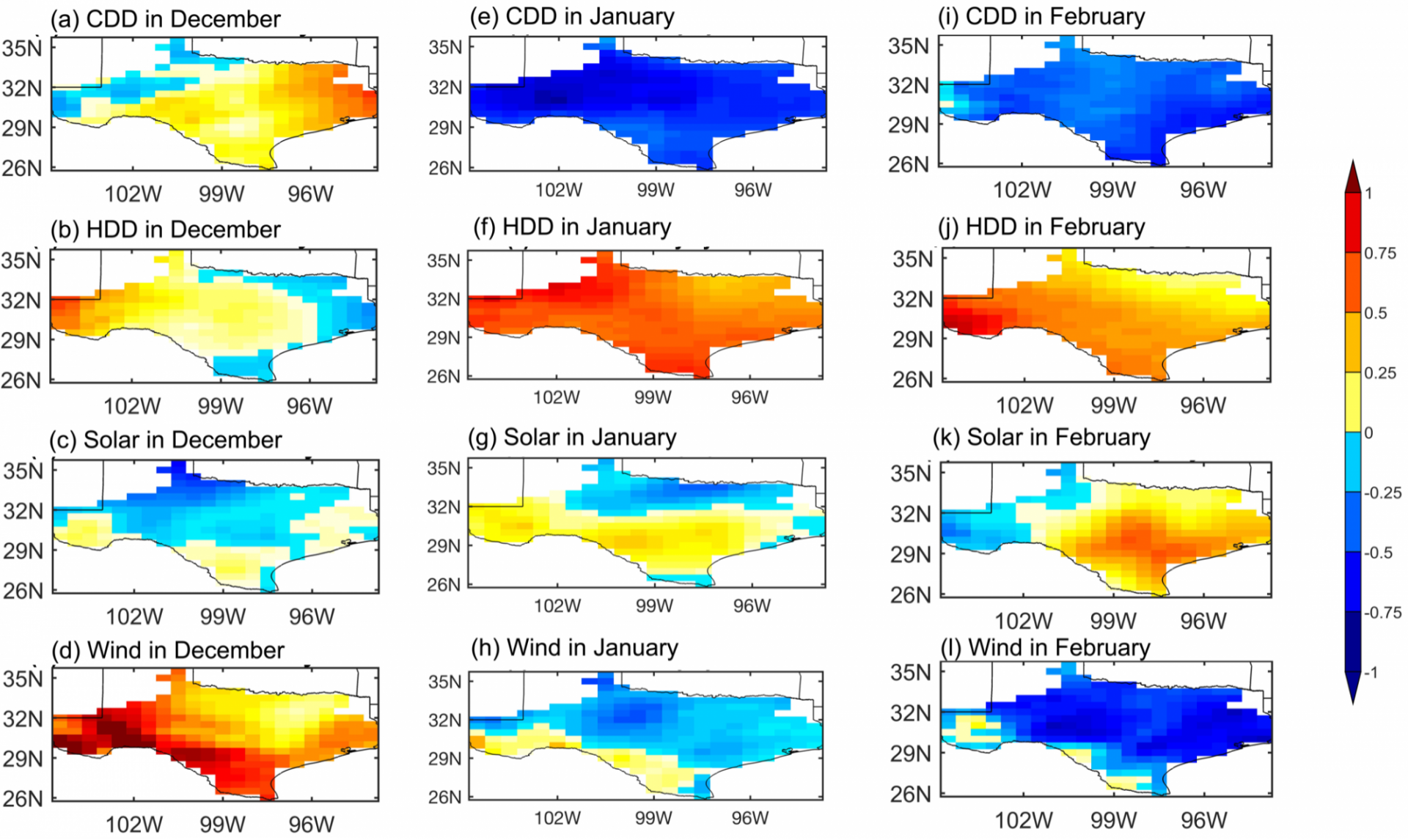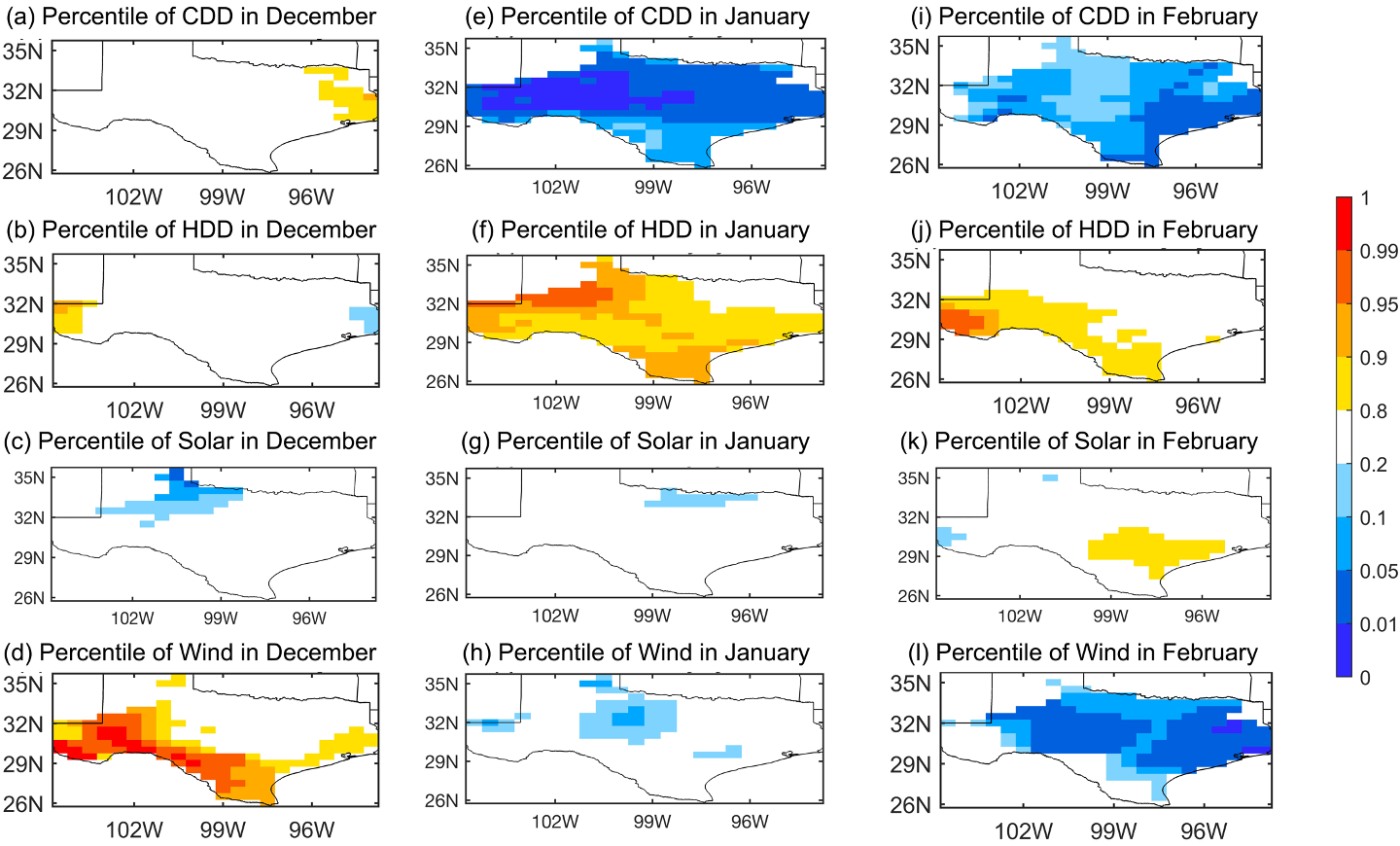Method:
For now, the Renewable Energy and Thermal Demand forecasts are conditioned just on the hidden state of SST identified by one of the SST models and data from Texas. In our paper we show that the forecasts using the latent states identified with ENSO are generally superior to those using the typical ENSO indices. However, these are still limited to the use of the tropical SST as the conditioning variable and at the moment do not incorporate other variables. The forecast method is simple. For each calendar month, and the current hidden state of SST identify the conditional mean of the energy variable m months later for every global pixel, and report it as a percentile of the energy variable distribution for the future month. Thus if the current month is December and is classified as a strong El Nino and the forecast is for February, it is computed as the average of the energy variable for all February’s that are preceded by a December classified as a strong El Nino. This average value is then compared with the energy variable of all February values to assign it a percentile. This percentile is then reported as the forecast.
Forecasts:
The following 1-, 2-, 3-month ahead forecasts are based on the ENSO states simulated using November 2023 SST data and will be updated as new data is available.
In February, for instance, we observed a strong predictability for high Heating Degree Days (HDD) in West Texas, while the predictability for high HDD was relatively weak in the western coastal areas of Texas. Regarding wind, there was a noticeable trend of strong to moderate predictability for low wind conditions across most parts of Texas, with the exception of the far west and southern regions. Additionally, we noted a weak predictability for high solar energy in Southeast Texas.


